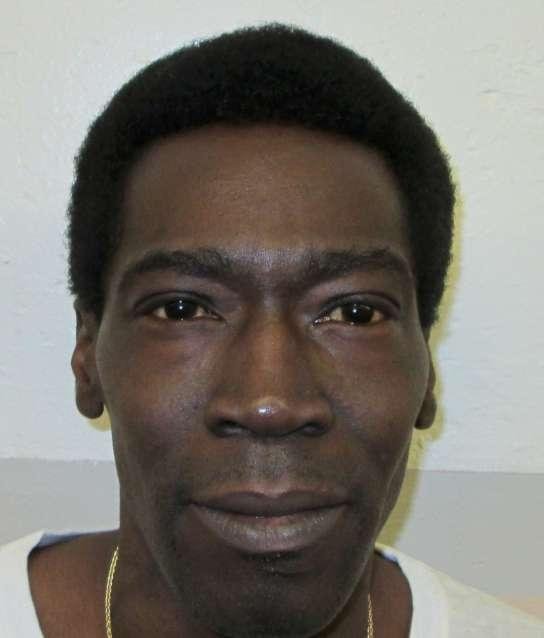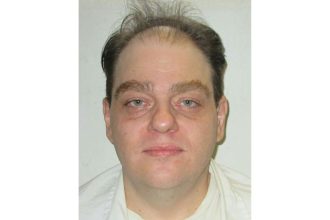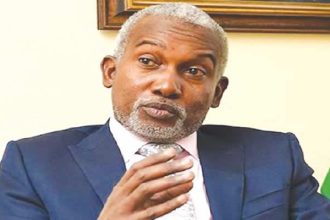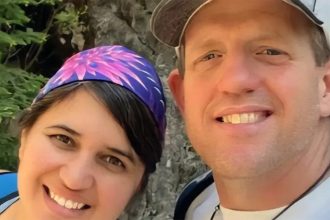Anthony Boyd, 53, was killed by nitrogen hypoxia Thursday evening in Alabama. Photo courtesy of Alabama Department of Corrections/Website
Oct. 23 (UPI) — Alabama on Thursday executed a death row inmate using a method Supreme Court Justice Sonia Sotomayor called “torturous suffocation” for a 1993 murder that he maintains he did not commit.
Anthony Boyd, 53, was killed by nitrogen hypoxia at the William C. Holman Correction Facility in Atmore, Ala., the state’s department of corrections told UPI in a statement.
Alabama Gov. Kay Ivey had issued a 30-hour time frame for Boyd’s death sentence to be carried out, from 12 a.m. CDT Thursday, with it starting on time at 6 p.m.
Boyd was pronounced dead at 6:33 p.m., the Alabama Department of Corrections told UPI.
He was sentenced to die for the 1993 murder of Gregory Huguley in Talladega County. Boyd was convicted of killing Huguley over a $200 cocaine debt. He and others duct-taped Huguley to a bench in a baseball field, doused him with gasoline and set him on fire.
“For more than 30 years, Boyd sought to delay justice through endless litigation, yet he never once presented evidence that the jury was wrong,” Alabama Attorney General Steven Marshall said in a statement issued after Boyd was killed.
“Gregory Huguley was never afforded the chance to delay his own brutal and untimely death.”
On Wednesday, he had three visitors and four phone calls, ate breakfast, lunch and snacks but refused dinner.
On Thursday, he had nine visitors and two phone calls. He ate breakfast and lunch, and snacks throughout the day, but declined a final meal request.
Boyd has maintained his innocence, and has pleaded with Ivey to meet with him.
During a press conference held Thursday morning by the Execution Intervention Project, a recording of a call Boyd made to Ivey on Wednesday night was played.
Boyd repeated his request for a meeting with Ivey.
“Before an innocent man is executed, come sit down with me and have a conversation with the guy that you deemed one of the worst of the worst,” he said. “Please, come talk to me, learn about me, get an understanding of me. Know the guy that’s innocent on Alabama’s death row.”
Ivey had the power to stay the execution.
According to court documents, Boyd was sentenced to death for killing Huguley on July 31, 1993. He and his co-defendants Shawn Ingram, Marcel Ackles and Quintay Cox, searched Anniston, Ala., for Huguley, also known as New York, that night as he had failed to pay the cocaine debt.
Driving in a van that Ackles had rented, the group spotted Huguley. Ingram, armed with an automatic pistol, approached Huguley, walked him to the van and then pushed him in.
They drove to a gas station where Ackles purchased gasoline in a plastic container, then they drove to a baseball field in Munford, arriving between 7 and 8 p.m.
Court documents state Ingram made Huguley lie on a bench while Ackles taped his hands and mouth and Boyd taped his feet. Ingram then doused their captive with gasoline, which he also used to draw a two-foot trail from the bench. He then lit the trail on fire.
According to the court documents, they watched Huguley burn for up to 15 minutes before the flames went out.
Like Boyd, Ingram was convicted of murder and sentenced to death, and is currently on Alabama’s death row.
Ackles was also convicted of murder and sentenced to life imprisonment without the possibility of parole. Cox, who pleaded guilty to no-capital murder, received life with the possibility of parole.
Boyd and critics argue that he was sentenced based solely on eyewitness testimony without any physical evidence linking him to the crime.
According to the Death Penalty Information Center, his original court-appointed attorney was paid a statutorily capped fee of $1,000 to represent Boyd, a situation that is criticized for creating ineffective representation.
Boyd has maintained that he has an alibi proving he was at a birthday party and had spent the night at a motel with his then-girlfriend the night Huguley was killed.
The center states the prosecution’s case relied heavily on one eyewitness whose testimony contained inconsistencies about Boyd’s involvement.
Boyd’s legal appeals for stays were rejected. He had also fought against the state’s use of nitrogen hypoxia, a method that was first used in the United States in January 2024.
On Thursday afternoon, the U.S. Supreme Court rejected his request for his case to be reviewed and for a stay of his execution.
In dissent, Sotomayor railed against denying his application to be killed by firing squad.
“For two to four minutes, Boyd will remain conscious while the State of Alabama kills him in this way. When the gas starts flowing, he will immediately convulse. He will gasp for air. And he will thrash violently against the restraints holding him in place as he experiences this intense psychological torment until he finally loses consciousness. Just short of twenty minutes later, Boyd will be declared dead,” she wrote.
“Boyd asks for the barest form of mercy: to die by firing squad, which would kill him in seconds, rather than by torturous suffocation lasting up to four minutes. The Constitution would grant him that grace. My colleagues do not.”
The other two liberal justices, Elena Kagan and Ketanji Brown Jackson, joined her in dissent.
Nitrogen hypoxia is a method of execution that deprives the brain of oxygen by forcing inmates to breathe only nitrogen.
Including Boyd, eight people have had their death sentences carried out by nitrogen hypoxia, which Sotomayor called “experimental” and that which “superadds psychological terror as a necessary feature of its successful completion.”
Boyd was the 40th inmate to be executed in the United States this year.









